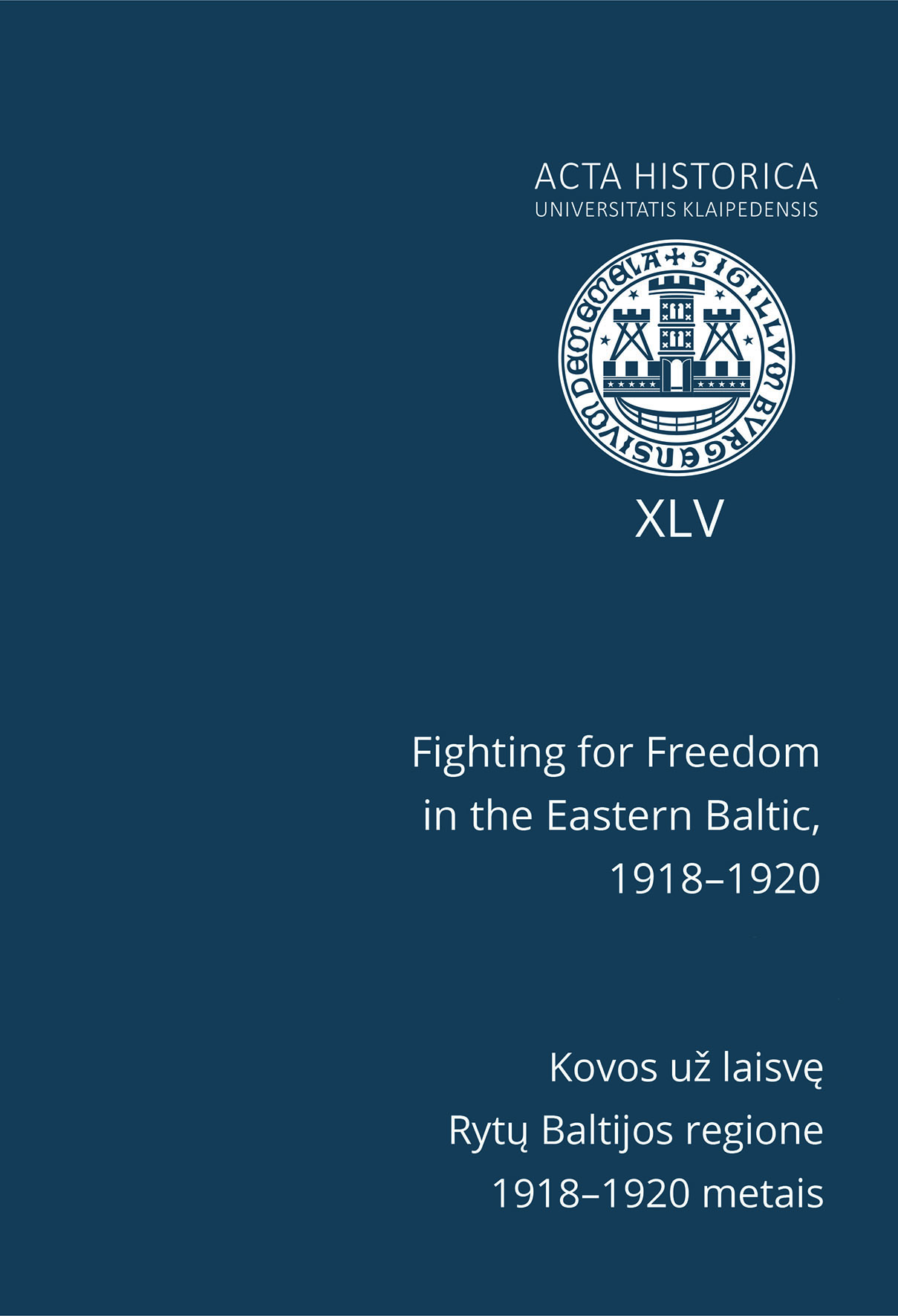Volume 45 (2024): Fighting for Freedom in the Eastern Baltic, 1918–1920 = Kovos už laisvę Rytų Baltijos regione 1918–1920 metais, December 2024

Order by:
Pub. online: 10 Dec 2024
Type: Editorial Note
 Open Access
Open Access
Journal:
Acta Historica Universitatis Klaipedensis
Volume 45 (2024): Fighting for Freedom in the Eastern Baltic, 1918–1920 = Kovos už laisvę Rytų Baltijos regione 1918–1920 metais, pp. 5–6
Pub. online: 10 Dec 2024
Type: Introduction
 Open Access
Open Access
Journal:
Acta Historica Universitatis Klaipedensis
Volume 45 (2024): Fighting for Freedom in the Eastern Baltic, 1918–1920 = Kovos už laisvę Rytų Baltijos regione 1918–1920 metais, pp. 7–12
Pub. online: 10 Dec 2024
Type: Article
 Open Access
Open Access
Journal:
Acta Historica Universitatis Klaipedensis
Volume 45 (2024): Fighting for Freedom in the Eastern Baltic, 1918–1920 = Kovos už laisvę Rytų Baltijos regione 1918–1920 metais, pp. 15–37
Abstract
Pub. online: 10 Dec 2024
Type: Article
 Open Access
Open Access
Journal:
Acta Historica Universitatis Klaipedensis
Volume 45 (2024): Fighting for Freedom in the Eastern Baltic, 1918–1920 = Kovos už laisvę Rytų Baltijos regione 1918–1920 metais, pp. 39–58
Abstract
Pub. online: 10 Dec 2024
Type: Article
 Open Access
Open Access
Journal:
Acta Historica Universitatis Klaipedensis
Volume 45 (2024): Fighting for Freedom in the Eastern Baltic, 1918–1920 = Kovos už laisvę Rytų Baltijos regione 1918–1920 metais, pp. 59–90
Abstract
Pub. online: 10 Dec 2024
Type: Article
 Open Access
Open Access
Journal:
Acta Historica Universitatis Klaipedensis
Volume 45 (2024): Fighting for Freedom in the Eastern Baltic, 1918–1920 = Kovos už laisvę Rytų Baltijos regione 1918–1920 metais, pp. 91–126
Abstract
Pub. online: 10 Dec 2024
Type: Article
 Open Access
Open Access
Journal:
Acta Historica Universitatis Klaipedensis
Volume 45 (2024): Fighting for Freedom in the Eastern Baltic, 1918–1920 = Kovos už laisvę Rytų Baltijos regione 1918–1920 metais, pp. 129–154
Abstract
Pub. online: 10 Dec 2024
Type: Article
 Open Access
Open Access
Journal:
Acta Historica Universitatis Klaipedensis
Volume 45 (2024): Fighting for Freedom in the Eastern Baltic, 1918–1920 = Kovos už laisvę Rytų Baltijos regione 1918–1920 metais, pp. 155–187
Abstract
Pub. online: 10 Dec 2024
Type: Article
 Open Access
Open Access
Journal:
Acta Historica Universitatis Klaipedensis
Volume 45 (2024): Fighting for Freedom in the Eastern Baltic, 1918–1920 = Kovos už laisvę Rytų Baltijos regione 1918–1920 metais, pp. 191–224
Abstract
Pub. online: 10 Dec 2024
Type: Article
 Open Access
Open Access
Journal:
Acta Historica Universitatis Klaipedensis
Volume 45 (2024): Fighting for Freedom in the Eastern Baltic, 1918–1920 = Kovos už laisvę Rytų Baltijos regione 1918–1920 metais, pp. 225–238
Abstract